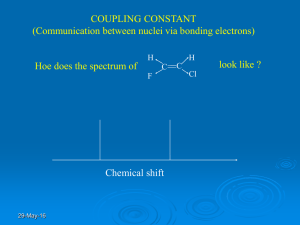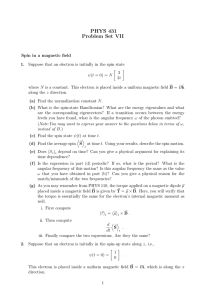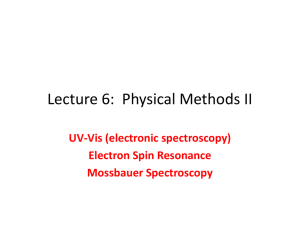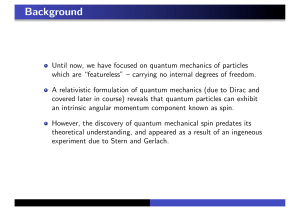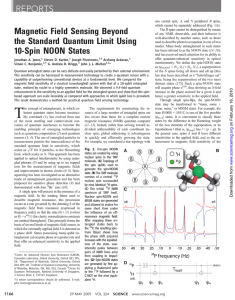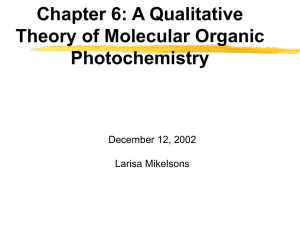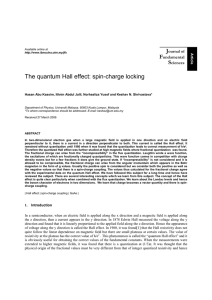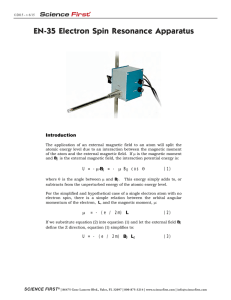PhD Position: Controlling spins by squeezing crystals
advertisement
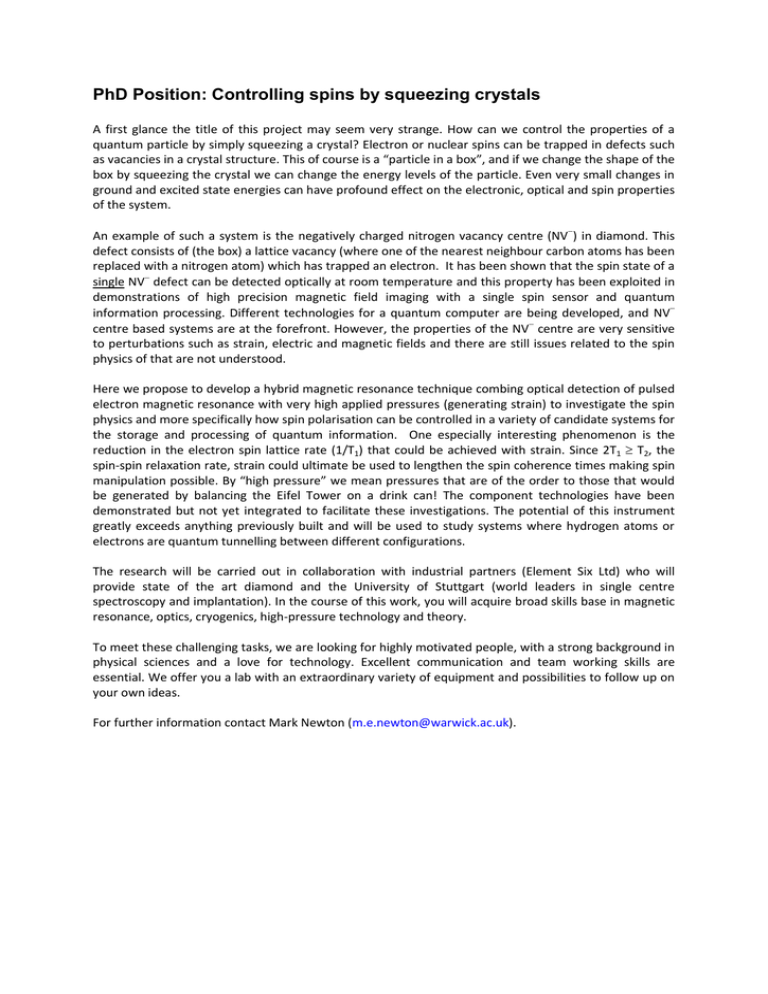
PhD Position: Controlling spins by squeezing crystals A first glance the title of this project may seem very strange. How can we control the properties of a quantum particle by simply squeezing a crystal? Electron or nuclear spins can be trapped in defects such as vacancies in a crystal structure. This of course is a “particle in a box”, and if we change the shape of the box by squeezing the crystal we can change the energy levels of the particle. Even very small changes in ground and excited state energies can have profound effect on the electronic, optical and spin properties of the system. An example of such a system is the negatively charged nitrogen vacancy centre (NV) in diamond. This defect consists of (the box) a lattice vacancy (where one of the nearest neighbour carbon atoms has been replaced with a nitrogen atom) which has trapped an electron. It has been shown that the spin state of a single NV defect can be detected optically at room temperature and this property has been exploited in demonstrations of high precision magnetic field imaging with a single spin sensor and quantum information processing. Different technologies for a quantum computer are being developed, and NV centre based systems are at the forefront. However, the properties of the NV centre are very sensitive to perturbations such as strain, electric and magnetic fields and there are still issues related to the spin physics of that are not understood. Here we propose to develop a hybrid magnetic resonance technique combing optical detection of pulsed electron magnetic resonance with very high applied pressures (generating strain) to investigate the spin physics and more specifically how spin polarisation can be controlled in a variety of candidate systems for the storage and processing of quantum information. One especially interesting phenomenon is the reduction in the electron spin lattice rate (1/T1) that could be achieved with strain. Since 2T1 T2, the spin-spin relaxation rate, strain could ultimate be used to lengthen the spin coherence times making spin manipulation possible. By “high pressure” we mean pressures that are of the order to those that would be generated by balancing the Eifel Tower on a drink can! The component technologies have been demonstrated but not yet integrated to facilitate these investigations. The potential of this instrument greatly exceeds anything previously built and will be used to study systems where hydrogen atoms or electrons are quantum tunnelling between different configurations. The research will be carried out in collaboration with industrial partners (Element Six Ltd) who will provide state of the art diamond and the University of Stuttgart (world leaders in single centre spectroscopy and implantation). In the course of this work, you will acquire broad skills base in magnetic resonance, optics, cryogenics, high-pressure technology and theory. To meet these challenging tasks, we are looking for highly motivated people, with a strong background in physical sciences and a love for technology. Excellent communication and team working skills are essential. We offer you a lab with an extraordinary variety of equipment and possibilities to follow up on your own ideas. For further information contact Mark Newton (m.e.newton@warwick.ac.uk).


